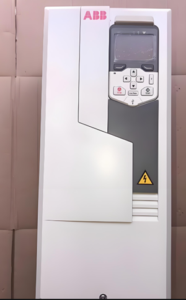Introduction
Choosing the right frequency converter—also known as a frequency changer or frequency converter transformer—is crucial for ensuring your equipment operates reliably and efficiently. Whether you need to convert 50Hz to 60Hz for exported machinery, match voltage for international power standards, or reduce harmonic distortion in sensitive industrial systems, the right selection can improve performance and reduce costs.

This guide will walk you through the key factors to consider when buying an industrial frequency converter for your specific application.
- Define Your Technical Requirements
See our industrial frequency converters
Before comparing models, clarify these essential parameters:
- Input frequency (Hz): For example, 50Hz power supply.
- Output frequency (Hz): For example, 60Hz for US or Japan markets.
- Power rating (kW or VA): Match the converter size to your load.
- Voltage rating (V): Check if your system requires single-phase or three-phase, and the voltage range (e.g., 220V, 380V).
- Efficiency needs: Decide whether you prioritize high efficiency (lower energy loss) or cost-effective solutions.
- Choose the Right Converter Type
- Step-up/Step-down frequency converters: Change frequency from lower to higher (or vice versa).
- Isolation converters: Provide galvanic isolation for safety and noise reduction.
- Bidirectional converters: Allow frequency conversion in both directions, suitable for testing or multi-standard operations.
- Select Converter Topology
- Voltage Source Inverters (VSI): Best for small to medium-power applications.
- Current Source Inverters (CSI): Suitable for medium to high-power loads.
- Resonant Converters: High efficiency for demanding industrial processes.
- Evaluate Key Specifications
- Efficiency: Higher efficiency means lower energy loss and reduced heat.
- Power Factor: Aim for ≥0.9 for better system performance.
- Harmonic Distortion (THD): Lower THD ensures a clean, stable output waveform.
- Noise Level: Choose low-noise models if your application involves laboratories or sensitive environments.
- Understand Conversion Ratios
- Step-up Conversion: Output frequency is higher than input.
- Step-down Conversion: Output frequency is lower than input.
- Select the Packaging Type
- Enclosed units: Self-contained with built-in cooling, easy installation.
- Open-frame units: Require external cooling, suitable for integration into existing cabinets.
- Check Certifications & Compliance
Verify compliance with relevant standards: UL, CE, IEC, or local certifications. This ensures safety and legal operation.
- Consider Maintenance & Support
Choose a reputable supplier that offers warranty, spare parts availability, and technical support.
- Evaluate the Total Cost of Ownership
Factor in purchase price, installation, maintenance, and replacement costs—not just the initial investment.
Conclusion
By following these steps, you can confidently select the best frequency converter for your industrial application—whether it’s a 50Hz to 60Hz converter for export equipment, a high-efficiency unit for continuous operation, or a cost-effective solution for occasional use.
At XPModule.com, we provide a range of industrial frequency converters and variable frequency drives with competitive prices, international shipping, and technical support.
Contact us today to find the perfect match for your needs. (📩 Instant Quote for Your Frequency Converter)
